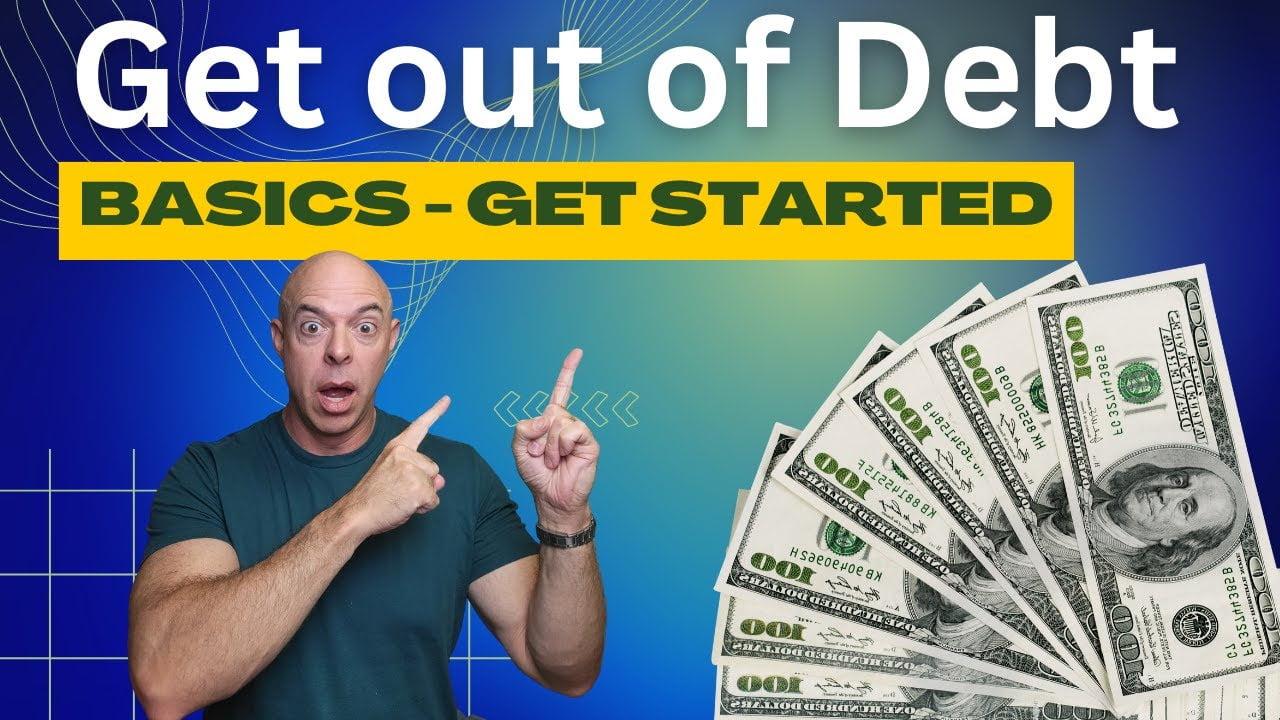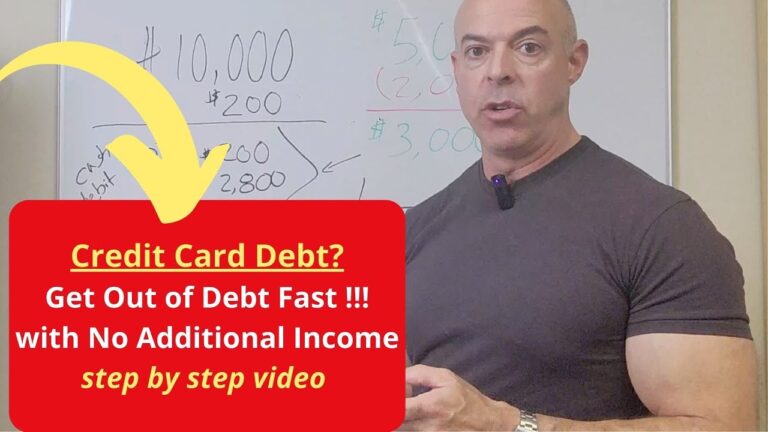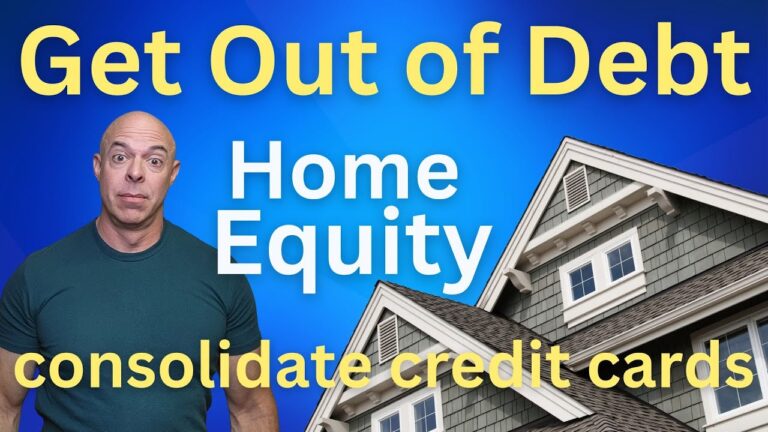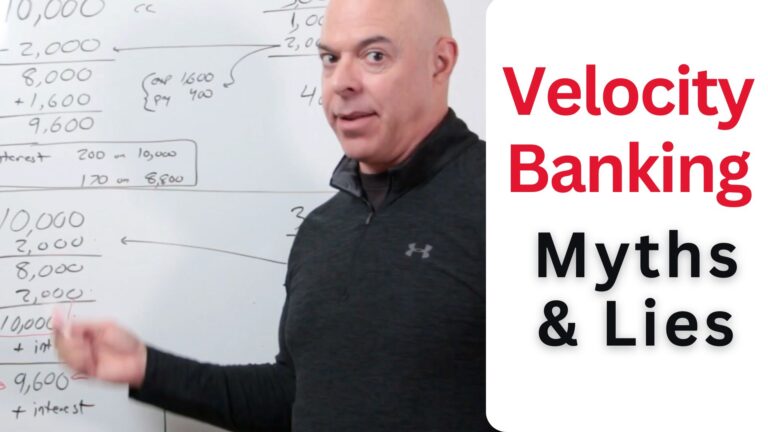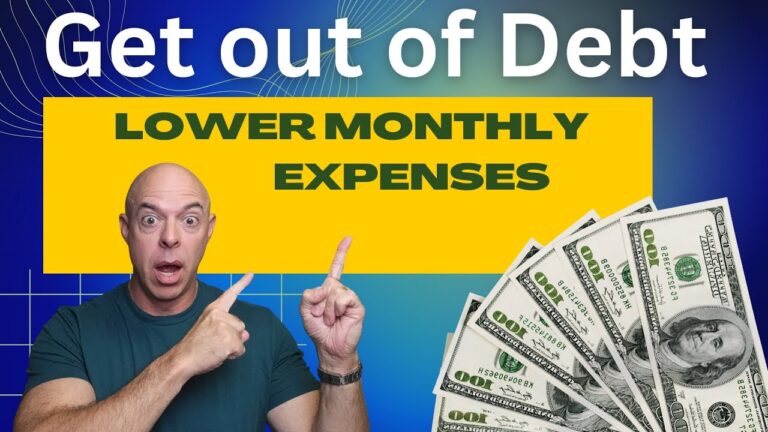Get out of Credit Card Debt with Budget Basics
Let’s Talk About the Basics of Getting Out of Debt. This is going to be very simple. If you know all of this, skip this video. But we’re going to start with some simplistic ways of analyzing what you should do, in other words, what you should pay off first. We will start by learning to create a budget.
Watch the Get out of Credit Card Debt with Budget Basics
You probably have heard all sorts of business terms, but you should apply them to your personal finances like a balance sheet and cash flow statement. There’s all kinds of ways to look at these things, but a balance sheet basically says how much stuff do you have and how much stuff do you owe. If you could sell all your stuff and you would get a hundred thousand dollars, and you owe twenty thousand dollars, just subtract, and you’re essentially worth eighty thousand dollars. Now, you might be surprised, look at it and realize you’re less than zero, a bad situation.
But let’s talk about cash flow. Cash flow is real simple. How much money do you have coming in? Maybe after taxes, you have four thousand dollars coming in on a monthly basis. How much money is going out the door? What are you paying for? A home mortgage or rent? What are you paying for a car? Are you paying for insurance, electricity, all those things?
Now, no reason to be overwhelmed and jump online to some website where you’re gonna have to enter this information in and hook it to your bank accounts and go, “Forget it!” Just grab a piece of paper and write these things down. You just have to do it once to get started or use a spreadsheet, but you need to know how much is coming in and how much is going out. Obviously, you want to make sure that you’re not spending more on a monthly basis than you’re bringing in.
Let’s say you aren’t, now what do you pay off first? You’ve got potentially a mortgage, car loans, potentially personal loans, maybe credit card loans. I’m going to show you the difference between something like a credit card loan and a car loan because it is substantial, the amount of money you’re going to end up paying on some of these high-interest rate credit cards versus a car, it is phenomenally different. So I’ll show you an example coming up here of exactly how you should write these things down. Just think about all your different bills, maybe grab a couple of statements on average, see what they are in a month, and then pick the one, probably the credit cards if you’ve got a balance, that you need to pay off first.
You’ll see how much money is being wasted, meaning there’s interest payments as well as principal. What does that mean? Well, if you owe a hundred dollars on your electric bill this month, you pay them a hundred dollars, it all goes to the electric bill. But on a loan, when you make that hundred dollar payment on a monthly basis, if there’s a percentage rate for the loan, part of it is going to go to what’s called principal, and part of it’s going to go to what’s called interest. The interest is just gone, it’s useless for you. That’s why you want to get rid of them. It might be a hundred dollar payment, it might be sixty dollars going to principal if you owe a thousand dollars. That hundred dollar payment is only going to pay down sixty. Now you owe nine hundred and forty dollars, and the other forty is going to interest. That’s just profit for the bank or whoever you happen to have gotten a loan from.
So I’m going to show you really quickly how to write these things down. It’s worth doing. It’s very basic, but you’ll never make changes in your finances or wipe out any debt if you don’t have things written down so you can look at them and quickly determine what you need to take care of first.
Alright, so let’s take a look at just a basic cash flow money app. You’ve got a job, let’s say after taxes it’s a clean four thousand dollars. Just look at how much you’ve got on your monthly or by-monthly statement, or just look at what they put into your bank account and see how much money you have coming in. Let’s just say you’ve just got one job, that’s your only stream of income.
Then you’ve got, let’s say, rent of a thousand dollars, you’ve got a car payment (I’m going to give you an example to show you the amortization), but let’s say your car payment is $483.32. I’ll show you why in a moment. Utilities, streaming service, gas, water, let’s say it all adds up to 350, and then you’ve got a food budget, I don’t know, 500. You probably have some other things in there, let’s just go with that. You get the idea, you’ve got your revenue, then you’ve got your expenses.
Now let’s look at credit card debt and a car loan. So first off, we’ve got a calculator here online, they’re real simple, just loan amortization calculators. Why are we doing this? Let me show you why.
First of all, let’s say that you’ve got a $25,000 car that you purchased, that’s what you paid for it. Interest rate, let’s just use 6%, maybe it’s a new car, maybe it’s so you just got a good loan rate, it all depends. 60 months, that’s pretty typical, that’s five years at 12 months a year, that’s a 60-month loan term. You calculate, and it tells you all right, monthly payment is $483.32. Now, this type of loan means that if you pay that amount for that many months, you’ll be at zero balance, you won’t owe anything back, makes perfect sense. Over the life of this loan, it cost you $25,000, you’re going to pay total interest of $4,000, so you’re actually paying $28,999. You’re actually paying $29,000 for this $25,000 car.
So to be able to pay it off over 60 months, it’s gonna cost you $4,000. Alright, so we’ll put that in the sheet, that’s what you’re paying off. Now, when you look at what’s called amortization, what does that mean? It means that out of your monthly payment, interest is $125, and principal is $358. $358 is actually going to pay down the loan, $125 is just gone, someone’s getting it, a bank or whomever serves in your loan.
Now, as you can see, the first payment has the most interest, and then it goes down, less interest, less interest, the amount of principal goes up. But let’s just use this for the first month, we’ll put that on the sheet so you can see how much money you’re just essentially losing by having this particular loan.
Now, let’s look at debt for a credit card. I think the last study I saw was around ten thousand dollars the average American has, so we put in here calculated with ten thousand dollars credit card balance. Let’s say the interest rate is 21%, not atypical. Let’s just say that on your statement, it says you only have to make a minimum payment of two hundred dollars. When you click to calculate, you can see what does that really mean?
Well, in this case, a $200 monthly payment is going to take 120 months to pay off, that’s 10 years. Ten thousand dollars is going to take you 10 years. That’s incredible. On the car loan, it was $25,000, and it only took you five years, that’s why credit cards are so dangerous because they have a high-interest rate.
Now, what does that mean over time? Total principal, ten thousand dollars, meaning you paid off your balance, at this $200 monthly payment, interest, you paid thirteen thousand nine seventy-two. You paid a total of twenty-three thousand nine seventy-two dollars. That’s absurd. You paid more than twice your actual debt. Now, if you look at that in a loan amortization, your $200 monthly payment, what does that mean?
So here it is, ten thousand debt, 21% interest rate, 120 months, which is 10 years, that’s what it said on the other page. $200 payment, essentially interest 175 dollars, of the 200 payment, principal only 25 dollars. For your 200 dollars payment, you’re actually only paying down 25, and you’re losing 175.
So hopefully you can see why it’s so obvious that when you look at your various types of loans like a personal loan, a car loan, a credit card loan, the credit card loans can be absurd in terms of how much money you’re basically throwing away every month and over time that ten thousand dollars or whatever it was you happen to purchase ended up costing you twenty-four thousand dollars. Imagine that, that means if you bought a pair of shoes for a hundred dollars, you’re actually going to pay two hundred and forty dollars for those shoes, that shouldn’t make you happy.
So now you know, and now you can see what you want to pay off faster because of that. You want to make sure that not only do you pay it off faster, but you want to get rid of it by increasing what you’re paying per month because the more you pay per month, obviously the faster it’s going to go and get paid off. Let’s say that 200 was 400 somehow, you earned another 200 a month, or you got rid of some other expenses. Let’s see what that did for you.
Oh my goodness, at a 400 monthly payment, it’s only going to take you 34 months to pay off, not 120. Right, so that’s less than three years instead of 10 years, and your total interest is only $3266. Look at what a difference that is. You found an extra two hundred dollars. Now, I don’t know what you’re doing, but if you’ve got, let’s say, a streaming service that costs $100 a month and you can get rid of it and watch some free online TV, that’s a hundred dollars you just saved to add to your monthly payment. Make some other adjustments, find another hundred dollars, stop eating out, whatever it takes because you just saved ten thousand dollars in seven years.
That’s why, in order to get out of debt, the first thing you need to do, this was a simplistic video, is write everything down, everything just like I showed you so you know exactly what you’re paying because that’s going to motivate you to get rid of it and get out of debt much faster. That is how you create a budget. And then you can start using credit cards to your advantage. I hope you found this useful. Hopefully, you found this example helpful and it got you started to figure out what you need to get rid of first and to show you how much money you can save once you get rid of things like the credit card debt. And then you can start watching the other videos and using the cards to your advantage without carrying a balance. Thanks, and please subscribe if you like the channel. I hope you found this helpful as learning budget creation is never fun but necessary.
Try this Get out of Debt SIX Video Course (video 1 of 6) : Understanding Your Cash Flow as this entire course is free.

